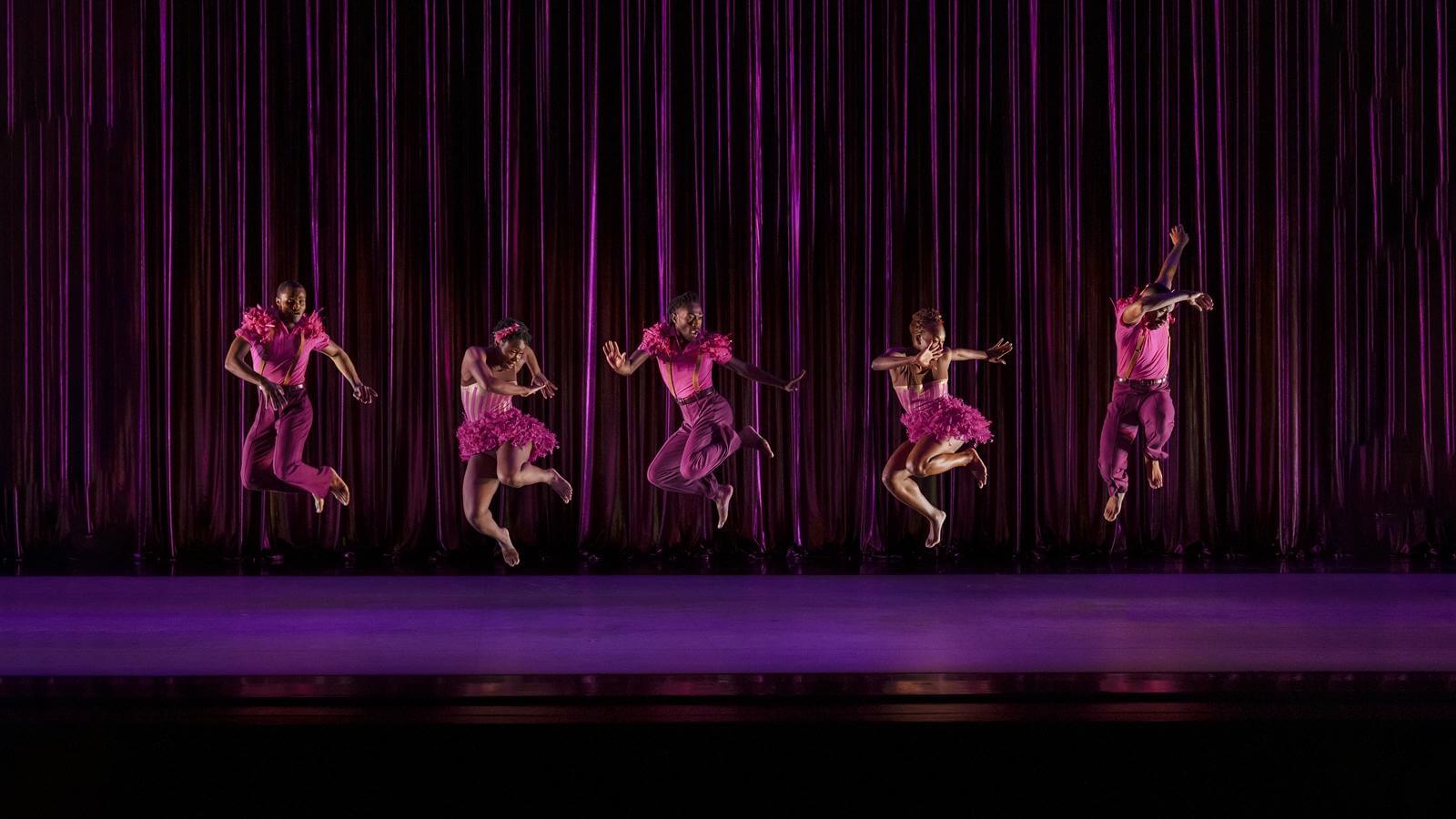Alvin Ailey: A Thriving Legacy of Excellence

When Alvin Ailey premiered Revelations in 1960, he was not quite 30 years old and his dance company had only been performing for two years. Ailey, son of a teenage single mother, uprooted from his native Texas, moving to Los Angeles at the tender age of twelve. His early talent was recognized in his performances with Lester Horton, founder of one the nation’s first interracial dance companies. When Horton died in 1953, his 23-year-old protegé took on the director’s reins. Then, having moved to New York, Ailey appeared in Broadway productions, studying with American dance icon Martha Graham, before forming his own company in 1958. The Alvin Ailey Dance Theater was intended as the liberated cultivation of a new vocabulary, a new legacy for American dance.
Revelations, the centerpiece of the night’s performance, is infused with “blood memories” of Ailey’s childhood in the Baptist churches of backwoods Texas. This tryptych—”Pilgrim of Sorrow,” “Take Me to the Water,” and “Move, Members, Move” uses a variety of Negro spirituals to depict a rural African American experience. Ailey described this experience as “sometimes sorrowful, sometimes jubilant, but always hopeful.”
With the first notes of “Wade in the Water,” the Nashville audience burst into vigorous applause. The reverence for this work, over fifty years old, seemed as vital, and well-deserved, as the day it poured from Ailey’s spirit onto that New York stage.
Famed dancer Judith Jamison describes the “Pilgrim” section as “reaching for something you cannot touch but can only feel.” Dimming lights, spinning dancers, and virtuosic gymastic movements similar to current athletes like Olympian Simone Biles, showed Ailey’s visionary imagination. This continued into the second section, a celebration of baptism with backdrop scenes of white-tufted blue waves and floor movements of writhing believers dipped in the waters while church ladies with trembling parasols hovered nearby. The last movement made reference to the backbreaking fieldwork of slavery and the search for freedom with effective contrast between the earthy moves reminiscent of African village women and the prim postures of American church ladies.
The first work, Amy Hall Garner’s Century, is a tribute to her grandfather who had just reached his century mark in 2023. She chose music from the eras that most influenced his life: Count Basie, Ray Charles, Duke Ellington, and more. Despite the demoralizing elements of Jim Crow, World Wars, Civil Rights, and Vietnam, she chose to emphasize the joyous portions of his lifetime, the youthful frolicking, the spirited swirling of love and hope. Garner has choreographed for Beyoncé, but the breadth and depth of her ability is clear from this work that bears little likeness to hip hop style. In one highly compelling instance, right in the middle of Century‘s driving Big Band energy, there’s a meditative gospel piano solo “Total Praise,” by Cyrus Chestnut. The audience converted to congregation as I saw some church nods with the programs as fans, and heard a gentle “Amen” here and there.
One part of the Ailey’s tradition of liberation was the inclusion of body types typically rejected in Western classical dance. In the more expansive environments Ailey explored, traditional African movements, like widely separated legs and deep bending at the waist with undulating hips, shoulders, and backs. These reach maximum power with fuller female bodies and more muscular male bodies. Both choreographies by Ailey and Hall reflected this understanding.

Kyle Abraham went a different route, creating a mixtape of music from current artists, including Drake, Summer Walker, and Kendrick Lamar, the first Hip Hop artist to win a Pulitzer Prize. Despite the generally serious love songs, the choreography often provided delightful contrasts. Various couples and groups came together, came apart, with spoken word phrases about the trials and tribulations of love affairs interspersed between the breakups. Sometimes a member of a couple is left alone in humorous “What did I do wrong this time?” confusion of a surprised man accustomed to being the partner who does the dumping, being dumped: “She pulled a ‘me’ on me.” The acting and comedic gestures enhanced the expertise of the company’s dancers. They easily brought the audience in on the joke.
But among the jokes were beautiful pairings, a lovely pas de deux for two women and a moving pas de deux for two men. There are even moments that can be best called pas de deux-style segments for three intertwining bodies. And Abraham often had the dancers moving slowly to faster music or continuing the onstage movement even after a music segment was silenced.
As worthy descendants of Ailey and his original company, Amy Hall Garner’s Century and Kyle Abraham’s Are You In Your Feelings? proved that the feet of modern dancers are in good hands. The evolution of this performance from Garner’s past to Abraham’s present, back to the founding father, ended in beautifully choreographed bows with hands in prayer, saving the more traditional classical bows for the enthusiastically entreated encore. Sixty-six years after its inception, Alvin Ailey Dance Theater, under the able current leadership of Robert Battle, still preserves the seeds of history while it continues to grow more history.
- About the Author
- Latest Posts
Y Kendall is a Stanford-educated musicologist, specializing in dance history who recently earned an MFA in Creative Nonfiction at Columbia University, studying nonfiction writing with Ben Ratliff and Margo Jefferson. Kendall’s diverse works have been published in Alchemy: Journal of Translation, Columbia Journal, Mitos Magazín, The Hunger Mountain Review, and The Salt Collective, among others. Born and raised in Tennessee, Kendall now lives near Nashville, freelancing as a flutist and writer, while caregiving for relatives.



